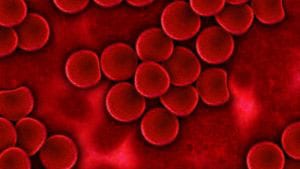Hemochromatosis (Iron Overload Disorder)
What is hemochromatosis?
Hemochromatosis is a rare disease that causes excess iron to build up in the body. Even though the body needs iron to survive, the concentration of iron in hemochromatosis is toxic and stored in the body tissues, especially the liver, heart, and pancreas. Without treatment, the build-up of extra iron can cause organ failure. There are two types of hemochromatosis: primary hemochromatosis (inherited) and secondary hemochromatosis (a complication from another condition, such as anemia or thalassemia).What causes hemochromatosis?
Primary hemochromatosis is caused by a mutation in the HFE gene that must be inherited by both parents. This is the greatest, and most common, risk factor for primary hemochromatosis. In addition, people of Northern European descent are more prone to the disease, and men are more likely to develop it, as well. As previously mentioned, secondary hemochromatosis is caused by an underlying condition, and it is much less common.What are the symptoms of hemochromatosis?
Some patients with hemochromatosis are asymptomatic, but when symptoms arise (usually appearing in midlife), they are generally similar to those of many other diseases and include:- Joint pain
- Fatigue
- General weakness
- Weight loss
- Stomach pain
- Diabetes
- Loss of sex drive
- Impotence
- Heart failure
- Liver failure
How is hemochromatosis diagnosed?
Hemochromatosis is diagnosed after looking into the patient’s medical and family histories, conducting a thorough clinical examination, and analyzing the results from various tests and procedures. However, since the symptoms of hemochromatosis are vague, two key tests are often used to detect an iron overload. These are:- Serum transferrin saturation, which measures the amount of iron bound to a protein
- Serum ferritin, which measures the amount of iron stored in the liver
What are the available treatments for hemochromatosis?
The primary treatment for hemochromatosis is removing blood from the body (phlebotomy). Because much of the body’s iron is stored in red blood cells, this treatment in turn helps lower iron levels and maintain hemochromatosis. In addition, certain medications and changes in diet can also help.Where can I find more information on hemochromatosis?
Hemochromatosis (Iron Overload Disorder) Articles

-300x300.jpg)
ICYMI: The Golden Age of Health and Wellness is Almost Here
Rose Duesterwald
November 19, 2019
Read More »

Early Detection is Key: Good Facts to Know During Hemochromatosis Awareness Month
Jean Martell
July 5, 2019
Read More »

Extremely Positive Results Announced from Interim Analysis of Phase 2 Clinical Trial for Hemochromatosis
Trudy Horsting
June 11, 2019
Read More »

Recent Research Links Hereditary Hemochromatosis to Joint Diseases and Cancers
James Moore
January 23, 2019
Read More »


5 Things You Should Know if You Have Hemochromatosis… and Also Eat Food
Corbin Wood
March 8, 2018
Read More »




